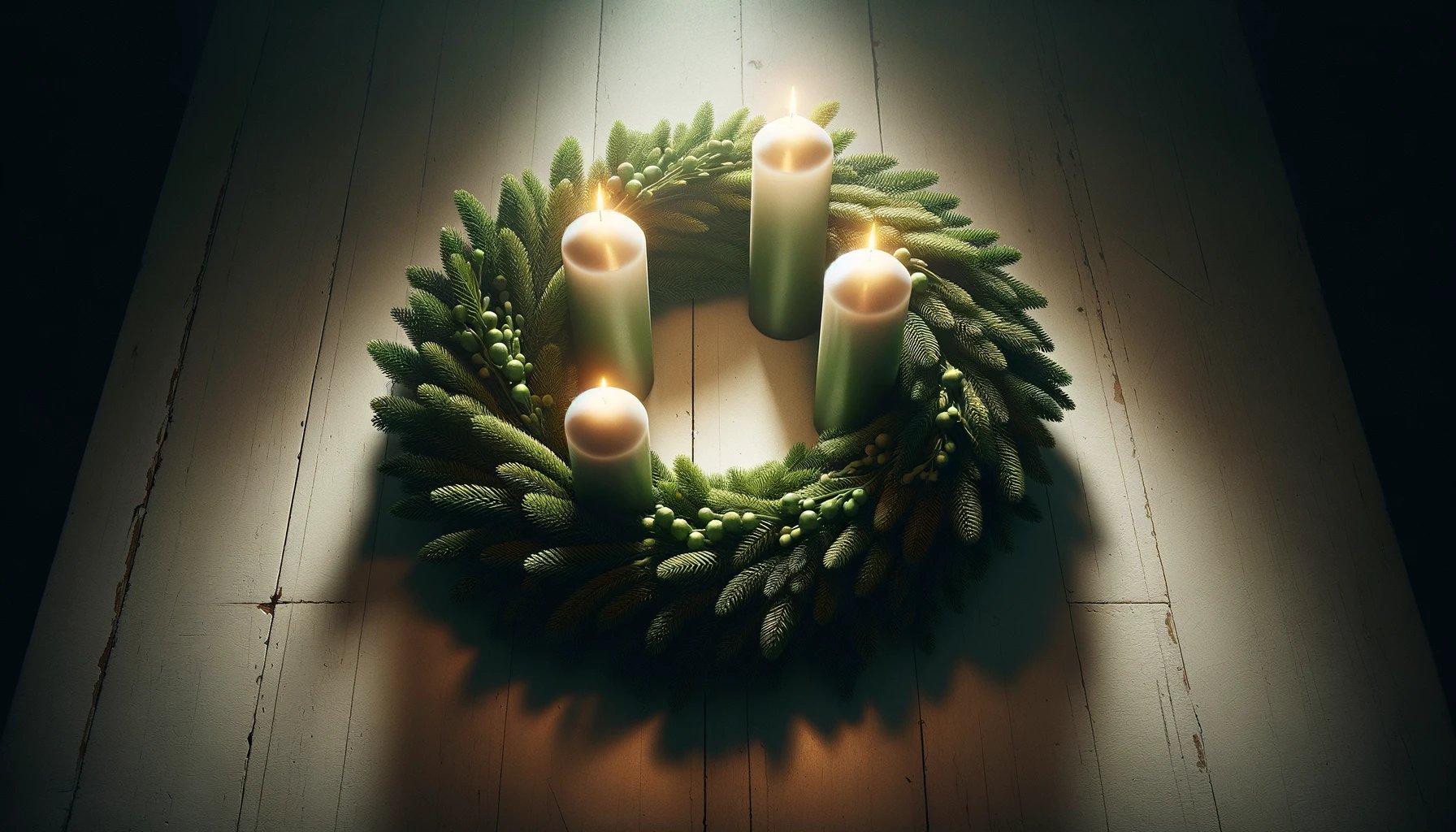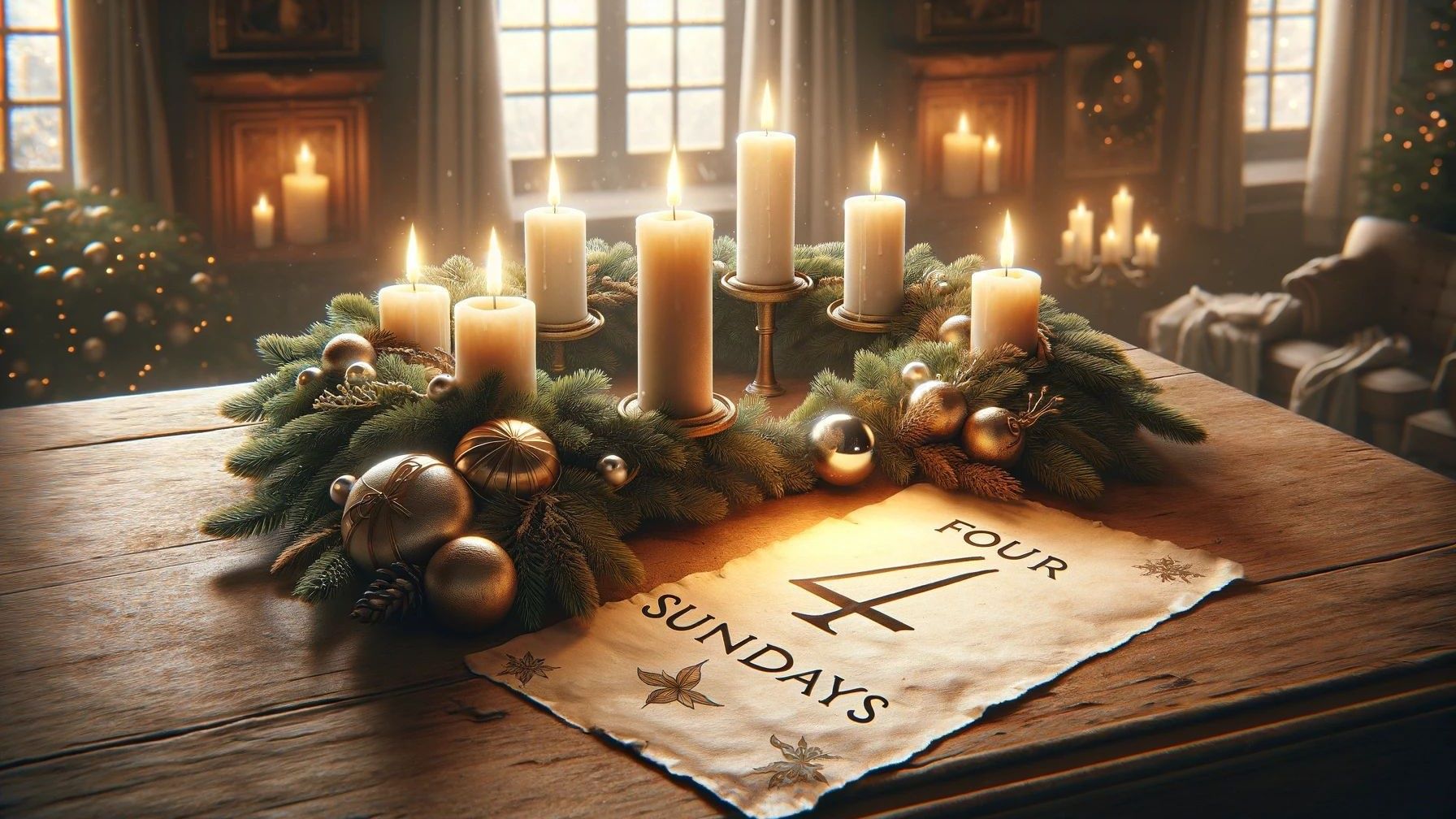Home>Special Themes>How Many Candles Are Lit For Advent


Special Themes
How Many Candles Are Lit For Advent
Published: February 12, 2024
Jason DeRose, Managing Editor at Christian.net, uses his expertise in religion and journalism to deepen understanding of faith's societal impacts. His editorial leadership, coupled with a strong academic background, enriches the platform’s diverse content, earning him recognition in both journalism and religious circles.
Discover the significance of Advent and learn how many candles are traditionally lit during this special time of preparation and anticipation. Explore the rich traditions and themes associated with Advent.
(Many of the links in this article redirect to a specific reviewed product. Your purchase of these products through affiliate links helps to generate commission for Christian.net, at no extra cost. Learn more)
Table of Contents
Introduction
Advent, a time of anticipation and preparation, is a significant period in the Christian calendar. It marks the beginning of the liturgical year and is observed in various Christian denominations worldwide. One of the most recognizable traditions associated with Advent is the lighting of candles. These candles hold deep symbolic meaning and are an integral part of the spiritual journey during this season.
The lighting of Advent candles serves as a poignant reminder of the hope, love, joy, and peace that are embodied in the birth of Jesus Christ. As the world transitions into the winter season, the flickering flames of these candles illuminate the path towards the celebration of Christmas, fostering a sense of spiritual contemplation and renewal.
Throughout history, the tradition of lighting Advent candles has been cherished by families, congregations, and communities, serving as a unifying symbol of faith and unity. The act of lighting these candles not only signifies the passage of time but also encapsulates the essence of spiritual reflection and the anticipation of the coming of Christ.
As we delve into the history, symbolism, and practices associated with Advent candles, we will gain a deeper understanding of the profound significance they hold for millions of people around the world. This exploration will shed light on the diverse traditions and customs that have evolved over the centuries, enriching the tapestry of this sacred season.
Join me on this enlightening journey as we uncover the rich tapestry of traditions and symbolism woven into the fabric of Advent candles, and discover the profound impact they have on the hearts and minds of believers worldwide.
Read more: In What Order Are Advent Candles Lit
The History of Advent Candles
The history of Advent candles can be traced back to the early medieval period, with the tradition evolving over centuries to become an integral part of the Advent season. The concept of using candles to mark the passage of time and symbolize spiritual themes has deep roots in Christian history.
The origins of Advent candles can be linked to pre-Christian winter solstice celebrations, where people lit candles and fires to ward off the darkness of the season. As Christianity spread and adapted to various cultural practices, the symbolism of light and candles became intertwined with the spiritual significance of the Advent season.
The specific use of Advent candles in the Christian context can be attributed to 16th-century Germany, where the tradition of lighting candles during Advent gained prominence. Initially, the Advent wreath, adorned with candles, was used as a practical way to mark the four weeks leading up to Christmas. Each candle represented a week of anticipation, with an additional candle being lit on each Sunday of Advent.
Over time, the symbolism of the Advent candles became more deeply rooted in Christian theology, with each candle representing a specific theme. The first candle, often purple or blue, symbolizes hope or expectation. The second candle represents love, the third joy, and the fourth peace. In some traditions, a fifth white candle, known as the Christ candle, is placed in the center of the wreath and lit on Christmas Eve to symbolize the arrival of Christ.
The use of Advent candles spread throughout Europe and eventually made its way to other parts of the world, adapting to local customs and practices along the way. Today, the lighting of Advent candles is a cherished tradition in many Christian households and congregations, serving as a visual and symbolic reminder of the spiritual journey towards Christmas.
As we reflect on the history of Advent candles, we gain a deeper appreciation for the enduring significance of this tradition. The evolution of the Advent wreath and candles reflects the timeless human desire to find meaning and hope in the midst of darkness, and serves as a testament to the enduring power of faith and tradition.
The Symbolism of Advent Candles
The symbolism of Advent candles holds profound spiritual significance, encapsulating the essence of the Advent season and the anticipation of the birth of Jesus Christ. Each aspect of the candles, from their colors to the act of lighting them, carries deep symbolic meaning that resonates with the core themes of hope, love, joy, and peace.
The first candle, often purple or blue, represents hope or expectation. As the initial flame is kindled, it serves as a beacon of hope, illuminating the path through the darkness of the winter season. This symbolizes the anticipation of the coming of Christ, the light of the world, and the hope for redemption and renewal.
The second candle, also typically purple or blue, signifies love. As it is lit, it serves as a reminder of the boundless love embodied in the birth of Jesus Christ. This love extends beyond human understanding, offering solace and compassion to all who embrace its warmth.
The third candle, often pink or rose-colored, represents joy. Its flame radiates a sense of celebration and rejoicing, signifying the imminent arrival of the Savior. This candle embodies the joy that permeates the hearts of believers as they prepare to welcome the birth of Christ.
The fourth candle, usually purple, symbolizes peace. As its flame is ignited, it serves as a poignant reminder of the peace that transcends all understanding, a peace that is brought forth by the presence of Christ in the world. This candle embodies the tranquility and harmony that envelop the hearts of those who await the arrival of the Prince of Peace.
In some traditions, a fifth white candle, known as the Christ candle, is placed in the center of the wreath. This candle is lit on Christmas Eve, symbolizing the arrival of Christ and the culmination of the Advent season. Its radiant glow represents the presence of Christ, the embodiment of hope, love, joy, and peace, in the world.
The act of lighting these candles each week fosters a sense of spiritual contemplation and renewal, allowing individuals and communities to immerse themselves in the profound symbolism of the Advent season. As the flames flicker and dance, they serve as a visual representation of the spiritual journey towards Christmas, infusing the hearts and minds of believers with a sense of anticipation and reverence.
The symbolism of Advent candles transcends cultural and denominational boundaries, uniting believers in a shared expression of faith and devotion. It serves as a timeless reminder of the enduring significance of the Advent season and the transformative power of the message of Christ's birth.
As we immerse ourselves in the symbolism of Advent candles, we are invited to embrace the profound spiritual themes they represent, allowing their radiant glow to illuminate our hearts and minds as we journey towards the celebration of Christmas.
How Many Candles Are Lit for Advent
During the Advent season, the lighting of candles holds a central place in the observance of this sacred time. Traditionally, the Advent wreath is adorned with four candles, each representing a specific week leading up to Christmas. The lighting of these candles occurs on each Sunday of Advent, marking the progression of time and the deepening anticipation of the birth of Jesus Christ.
The first candle, often purple or blue, is lit on the first Sunday of Advent, symbolizing hope or expectation. The following week, a second candle, also typically purple or blue, is lit to represent love. On the third Sunday of Advent, the third candle, often pink or rose-colored, is ignited to embody joy. Finally, on the fourth Sunday of Advent, the fourth candle, usually purple, is lit to symbolize peace.
In some traditions, a fifth white candle, known as the Christ candle, is placed in the center of the wreath. This candle remains unlit until Christmas Eve, when it is ignited to signify the arrival of Christ and the culmination of the Advent season.
The act of lighting these candles each week serves as a poignant ritual, allowing individuals and communities to engage in a collective journey of spiritual reflection and anticipation. As each candle is kindled, it serves as a visual and symbolic representation of the passage of time and the deepening significance of the Advent season.
The progression of lighting the candles not only marks the temporal progression towards Christmas but also encapsulates the spiritual journey of believers as they prepare their hearts and minds to welcome the birth of Christ. The flickering flames of the candles illuminate the path towards the celebration of Christmas, fostering a sense of spiritual contemplation and renewal.
The tradition of lighting four candles for Advent has become a cherished and enduring practice in many Christian households and congregations. It serves as a tangible and evocative expression of the anticipation and hope that permeate the hearts of believers during this sacred season.
As we contemplate the significance of the four candles lit for Advent, we are reminded of the timeless themes of hope, love, joy, and peace that resonate deeply with the human spirit. The act of lighting these candles becomes a powerful ritual that unites believers in a shared expression of faith and devotion, enriching the spiritual tapestry of the Advent season.
The lighting of four candles for Advent encapsulates the essence of the season, inviting individuals to immerse themselves in the timeless traditions and profound symbolism that continue to inspire and uplift hearts around the world.
Different Traditions and Practices
The observance of Advent and the lighting of candles encompass a rich tapestry of traditions and practices that have evolved over time, reflecting the diverse cultural and denominational expressions of faith. Across various Christian communities and regions, unique customs and rituals have emerged, each adding depth and nuance to the collective experience of the Advent season.
In some traditions, the colors of the Advent candles may vary, with purple and pink being the most common choices. However, in certain denominations, blue is used instead of purple to symbolize hope and anticipation. The variation in candle colors underscores the flexibility and adaptability of the Advent tradition, allowing for cultural and regional influences to shape the expression of faith.
Furthermore, the symbolism associated with the Advent candles may differ among different Christian denominations. While the themes of hope, love, joy, and peace are universally recognized, some traditions may incorporate additional symbolic elements into the lighting of the candles. For example, the progression of the candles may be linked to specific biblical narratives or theological concepts, enriching the ritual with layers of meaning and significance.
In certain regions, the lighting of Advent candles extends beyond the confines of individual homes and congregations, spilling out into public spaces and community gatherings. This communal expression of faith fosters a sense of unity and shared purpose, as individuals come together to mark the progression of the Advent season through the lighting of candles.
The design and composition of the Advent wreath itself may also vary, with cultural influences shaping its aesthetic and symbolic elements. While the classic circular wreath adorned with candles remains a prevalent symbol, variations in materials, colors, and additional embellishments reflect the diversity of artistic and cultural traditions.
In some traditions, the lighting of the Advent candles is accompanied by specific prayers, readings, or musical expressions, further enriching the ritual with a multi-sensory experience. These additional elements serve to deepen the spiritual significance of the Advent season, engaging participants in a holistic and immersive journey of faith and reflection.
The diverse traditions and practices associated with the lighting of Advent candles serve as a testament to the enduring relevance and adaptability of this ancient ritual. As the flames of the candles illuminate homes, churches, and communities around the world, they bear witness to the rich tapestry of human expression and devotion, uniting believers in a shared celebration of faith and anticipation.
The myriad expressions of Advent traditions and practices serve as a testament to the enduring relevance and adaptability of this ancient ritual. As the flames of the candles illuminate homes, churches, and communities around the world, they bear witness to the rich tapestry of human expression and devotion, uniting believers in a shared celebration of faith and anticipation.
Read more: How Long Do Advent Candles Stay Lit
Conclusion
The tradition of lighting Advent candles is a timeless and cherished practice that transcends cultural and denominational boundaries, uniting believers in a shared expression of faith and anticipation. As we journey through the history, symbolism, and diverse traditions associated with Advent candles, we are reminded of the enduring significance of this sacred ritual.
The flickering flames of the Advent candles serve as a poignant reminder of the hope, love, joy, and peace that are embodied in the birth of Jesus Christ. Each candle, with its distinct color and symbolic meaning, invites believers to immerse themselves in the profound themes of the Advent season, fostering a sense of spiritual contemplation and renewal.
The evolution of the Advent wreath and candles reflects the timeless human desire to find meaning and hope in the midst of darkness, serving as a testament to the enduring power of faith and tradition. The act of lighting these candles each week becomes a powerful ritual that unites believers in a shared expression of faith and devotion, enriching the spiritual tapestry of the Advent season.
As the flames of the candles illuminate homes, churches, and communities around the world, they bear witness to the rich tapestry of human expression and devotion, uniting believers in a shared celebration of faith and anticipation. The diverse traditions and practices associated with the lighting of Advent candles serve as a testament to the enduring relevance and adaptability of this ancient ritual.
In conclusion, the lighting of Advent candles encapsulates the essence of the season, inviting individuals to immerse themselves in the timeless traditions and profound symbolism that continue to inspire and uplift hearts around the world. As we prepare to welcome the birth of Christ, the radiant glow of the Advent candles serves as a beacon of hope, love, joy, and peace, illuminating our hearts and minds as we journey towards the celebration of Christmas.














